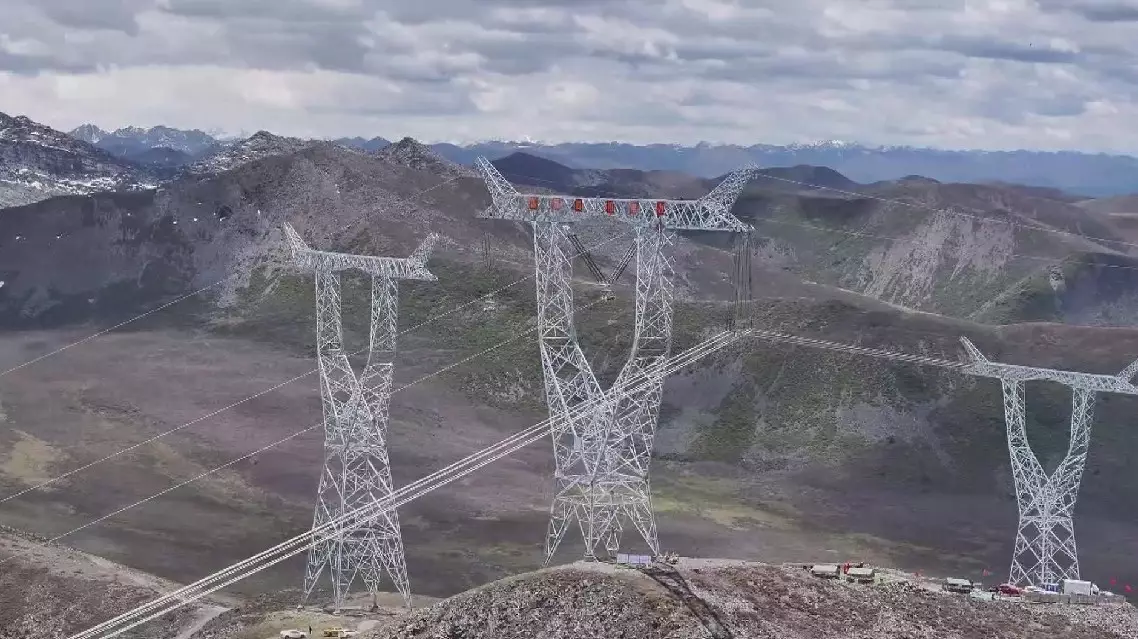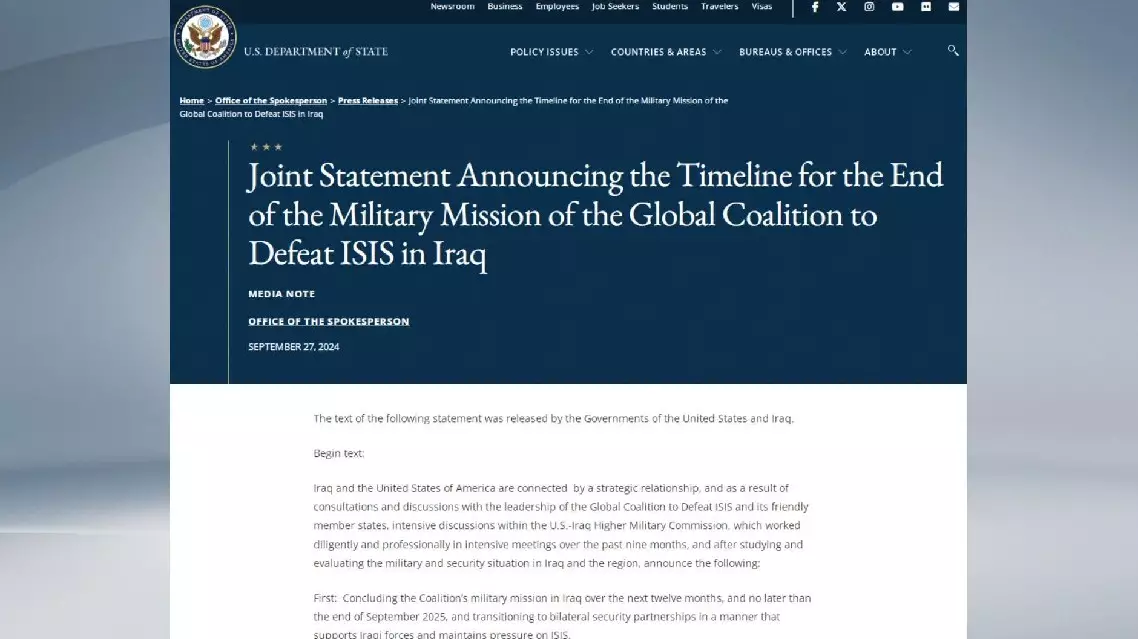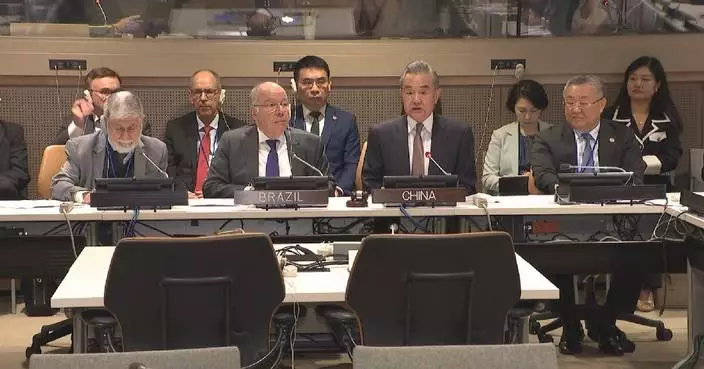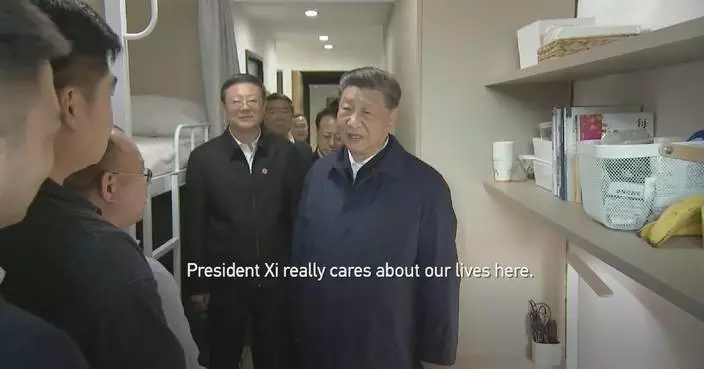High-altitude construction crews are pushing forward on China's 1,000 kv ultra-high voltage (UHV) power line connecting Sichuan and Chongqing in the southwestern part of the country, overcoming challenges posed by the rugged landscape.
On Monday, workers successfully strung the wires through a tower high up the mountains in Ganzi Tibetan Autonomous Prefecture in Sichuan Province.
The operation was conducted at a staggering altitude above 4,500 meters, where oxygen levels plummet to just 60 percent of those at sea level, making it the most challenging part in Section One of the entire project.
Workers were up in the clouds with snow-capped peaks as the backdrop, fixing the 10-split wires in a ring before leading the wires through the tower.
Split wires are mainly used in transmission lines with higher voltage levels to reduce power loss and interference and improve stability. Typically, a 220 kV transmission line is split into two wires, 500 kV is split into four, and 1000 kV is split into eight.
This project represents the first application of 10-split wires in the country.
"Ten-split wires are generally used in UHV transmission lines in high-altitude areas. They can effectively reduce transmission noise, resist strong winds and snowy weather, and improve transmission efficiency and stability," said Zeng Xiaohai, project manager of Section One of the project.
Traveling across various high mountains and large rivers, this project under construction is the first UHV AC project in southwest China. The highest altitude of the tower in the project reaches 4,750 meters, and there are 217 towers sitting at more than 3,000 meters above the sea level.
The power transmission project kicked off construction in September 2022. It is set to build four UHV substations respectively in Ganzi, Tianfu and Chengdu in Sichuan as well as Tongliang in Chongqing Municipality.
With a total investment of 28.8 billion yuan (nearly 4 billion U.S. dollars), the four substations will generate 24 million Kilovolt-amperes (kVA) of transformer capacity and cover 658 kilometers of double-circuit UHV lines.
"After the project is put into operation, the voltage level of the main grid of the Southwest Power Grid can be raised from 500 kV to 1000 kV, and more than 35 billion kWh of clean electricity can be transmitted annually," said Yi Lidong, chairman of State Grid Sichuan Electric Power Company.
Upon completion, the project can effectively undertake the transmission of clean electric energy such as hydropower from Ganzi and Aba in western Sichuan and ensure the power needs within Chengdu-Chongqing economic circle.

Sichuan-Chongqing ultra-high voltage project scales new heights









